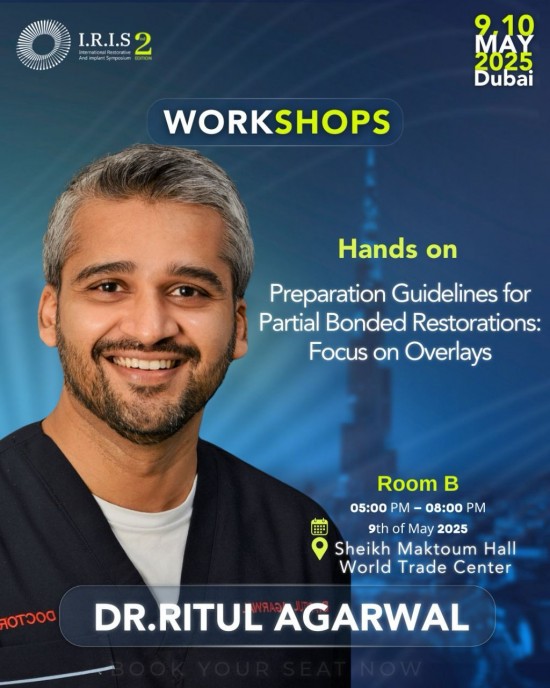IRIS Basic Workshop - Beyond Aesthetics: The Psychology of Smile Design, Tooth Morphology and the Foundation of Lasting Veneers

Learning Outcomes
By the end of this workshop, participants will be able to:
1. Understand the Rationale
-
Explain the principles and advantages of partial bonded restorations over full-coverage crowns.
-
Identify clinical indications and contraindications for overlays in restorative dentistry.
2. Material Considerations
-
Differentiate between various restorative materials (e.g., lithium disilicate, zirconia, composite) used in overlays and their impact on preparation design.
-
Select appropriate materials based on occlusal forces, esthetic demands, and tooth structure.
3. Preparation Design
-
Demonstrate knowledge of minimally invasive preparation principles specific to overlays.
-
Identify critical design features, including internal line angles, axial reduction, occlusal clearance, and margin design (e.g., butt joint, chamfer).
4. Clinical Execution
-
Perform a step-by-step tooth preparation for an overlay on a typodont or virtual simulation, maintaining optimal preservation of tooth structure.
-
Evaluate common errors in preparation that can compromise the fit, strength, or bonding of overlays.
5. Adhesion and Bonding
-
Describe the impact of preparation design on bonding surface area and long-term adhesion.
-
Outline essential steps to optimize the bonding substrate post-preparation.
6. Decision-Making & Case Selection
-
Apply evidence-based criteria to determine when an overlay is the most appropriate treatment option.
-
Discuss case scenarios and justify preparation approaches based on clinical findings.
Date : May 9, 2025
Time 5:00PM - 8:00PM
Room B
